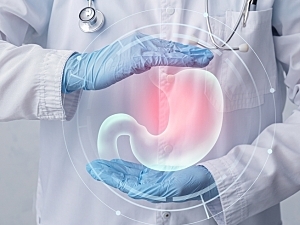Ingestible devices have been researched since the 1950s, and proof-of-concept trials support their ability to measure pH, temperature, and gastrointestinal motility.
Now, Giovanni Traverso, MB, BChir, PhD, a gastroenterologist in the Division of Gastroenterology, Hepatology and Endoscopy at Brigham and Women’s Hospital and MIT, and collaborators from West Virginia University and Celero Systems, have developed a vitamin-sized pill that measures respiratory rate and heart rate, including apneic events, from within the stomach.
In Device, the research team discusses the potential of the ingestible sensor to replace intrusive, externally worn sensors for sleep studies and serve as the basis for a device that would autonomously rescue people from an accidental opioid overdose.
System Details
The vitals-monitoring (VM) pill is powered by batteries that an external magnet activates. It contains an accelerometer to measure the small ballistic movements generated each time the heart beats or breathing occurs. Time stamps and accelerometer data are stored in device memory and periodically transferred to an external receiver for analysis.
A laptop computer has an interface to the receiver and runs custom data acquisition, device configuration, data logging, and data analysis software.
Sleep Studies
The first clinical demonstration in humans involved 10 adults, ages 27 to 75, who were scheduled for sleep study evaluation. During their sleep studies, they collectively provided 57 hours of VM pill data that was successfully transferred to the external receiver.
The accelerometer data showed distinct peristalsis, respiratory and cardiac frequency bands that allowed measurement of respiratory rate (RR) and heart rate (HR). The data streams captured by the pill were highly concordant with standard metrics:
- RR accuracy was within one breath per minute of polysomnographic airflow data
- HR accuracy was within 2–3 beats per minute of polysomnographic photoplethysmography data
No adverse events were reported, including any related to swallowing the pill or bowel obstruction. X-rays taken 14 days after the sleep study confirmed all participants had excreted the pill.
One participant had central sleep apnea events identified by polysomnography and also by the VM pill. That’s important for the application of the pill to sleep studies but also because central sleep apnea is physiologically very similar to opioid-induced respiratory depression (OIRD). In both conditions, there is no central nervous system drive to breathe.
OIRD: Human Simulation
After swallowing the VM pill, each sleep study patient was asked to alternate between breathing normally for 15 seconds and holding their breath for 15 seconds. Respiratory waveforms were not visible during breath holding, providing more evidence the pill accelerometer can detect cessation of breathing.
OIRD: Swine Model
A prototype accelerometer sensor placed in a pig’s stomach could detect OIRD directly. Intravenous fentanyl was administered while the animal was under anesthesia and caused respiratory failure within one minute.
A subsequent dose of naloxone reversed the overdose and returned RR to the baseline rate. The accelerometer accurately measured RR in real time, including both respiratory failure and revival.
Looking Ahead
The team’s plans include:
- Making the device even smaller
- Incorporating gastric residency technology to keep the device in the stomach for a week
- Creating closed-loop systems capable of not only detecting apneic episodes but also releasing an OIRD rescue drug on demand
Both the President’s Commission on Combating Drug Addiction and the Opioid Crisis and the Stanford–Lancet Commission on the North American Opioid Crisis have called for a system that can autonomously deliver an opioid antagonist when detecting OIRD.
